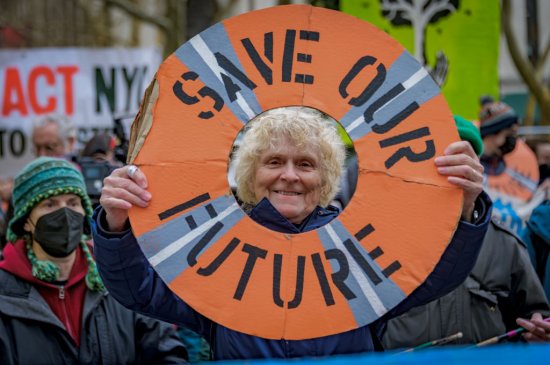
A new study explores ways to overcome the partisan gap on climate policy.
Liberals and conservatives don’t agree on much, including when it comes to combating climate change. But there is one surprising behavior where partisans from both ends of the spectrum seem to have more common ground than previously thought: planting trees. Our new research suggests that finding climate actions with bipartisan support is already possible–even in a country as politically polarized as the United States.
Planting trees matters; that’s why we measured it. As trees grow, they slow climate change by removing carbon dioxide from the air, storing it, and releasing oxygen into the atmosphere. The Intergovernmental Panel on Climate Change suggested that 950 million hectares of new forests could help limit the increase in global average temperature to 1.5-degrees Celsius.
[time-brightcove not-tgx=”true”]In a new global study, which will be published in a forthcoming issue of Nature Communications, we analyzed support for several climate change measures in 60 countries with a sample of over 51,000 people. Although we found clear evidence of polarization of climate change beliefs and policy support, conservatives and liberals were equally willing to make a real effort in a tree-planting task.
In fact, their efforts led us to plant 333,000 trees.
Of course, planting trees is not enough. Scientists concluded that policies geared towards phasing out fossil fuels are also critical to the climate solution landscape. And critics speculated that planting trees might reduce support for such climate mitigation tactics. They assume that engaging in one climate action automatically reduces effort towards another, due to limitations in attention, bandwidth, or resources. In our research however, we found no evidence for this assumption. If anything, we found the exact opposite pattern of results. People who planted more trees were, on average, also the most likely to support sustainable climate policy.
In fact, behaviors like planting trees might even help people identify with the cause and become an advocate for the environment. This underscores the need to act on areas where broad political support on climate action already exists and then build on that momentum.
Despite these grounds for optimism, there is still a long way to go. We found a persistent partisan gap on climate policy in many countries around the world–and especially in the U.S. To see if we could find a way to bridge this gap, we tested the effects of the 11 top psychological interventions (as determined by experts) designed to increase climate policy support across the political spectrum.
In the U.S, the best climate policy intervention was writing a letter to a future generation member, explaining one’s actions today to ensure a livable planet for that future adult. This intervention increased support for climate change mitigation policy by 10% across all American participants. This was also the top intervention for conservatives, increasing their support for climate policy by 13%!
However, different climate change messages resonate with different political audiences. For liberals, the top intervention was decreasing the psychological distance of climate change by presenting the climate consequences in one’s region (e.g., increased frequency and severity of wildfires and floods). This increased liberals’ climate policy support by 9%. One size doesn’t fit all.
For staunch partisans on either side of the aisle, the best intervention focused on highlighting the value of environmental purity and compliance with authority figures, like scientists or political and military leaders, as the reasons for taking climate action. This intervention increased climate policy support of strongly self-identified liberals by 8% and strongly self-identified conservatives by 21%. Thus, with the right messaging, people across the political spectrum can be mobilized to support climate policy.
These results are unique to the U.S, but our research suggests that different interventions might be more successful at bridging these divides in other nations. To explore the effects of our interventions in any of the countries where we conducted this experiment, we created an open access and user friendly web app, which can be accessed here.
The U.S. is deeply polarized along partisan lines when it comes to climate change beliefs and mitigation policy; however, our research suggests that not only are there climate solutions with broad agreement, but also effective strategies to increase conservatives’ climate policy support. Climate change advocates can close the partisan gap and spur the behaviors and policies necessary to reduce the risks posed by the changing climate.
Indeed, both sides of the political divide have been increasingly discussing and even proposing solutions to this existential threat, albeit from alternate angles. For instance, Republican lawmakers have suggested tackling the climate crisis by planting a trillion trees. On the other hand, Democratic legislators are proposing solutions supportive of clean energy development, for example through the Inflation Reduction Act, a landmark policy in the transition to renewables.
By building on some of these initial policies–like planting trees–while framing the other policies in more resonant ways, we might be able to build the necessary momentum to address climate change.
TIME Ideas hosts the world's leading voices, providing commentary on events in news, society, and culture. We welcome outside contributions. Opinions expressed do not necessarily reflect the views of TIME editors.